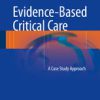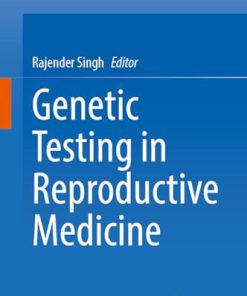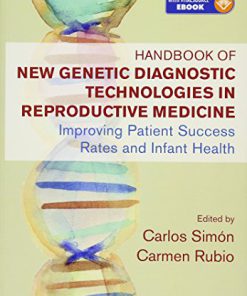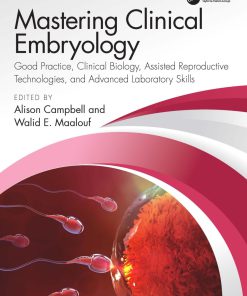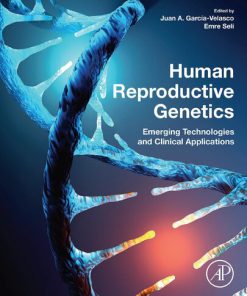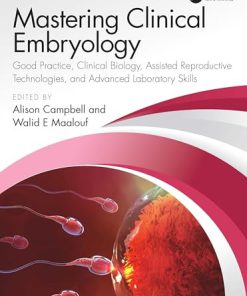Clinical Ethics at the Crossroads of Genetic and Reproductive Technologies 1st Edition Sorin Hostiuc 0128137657 9780128137659
$50.00 Original price was: $50.00.$25.00Current price is: $25.00.
This completed downloadable of Clinical Ethics at the Crossroads of Genetic and Reproductive Technologies 1st Edition Sorin Hostiuc
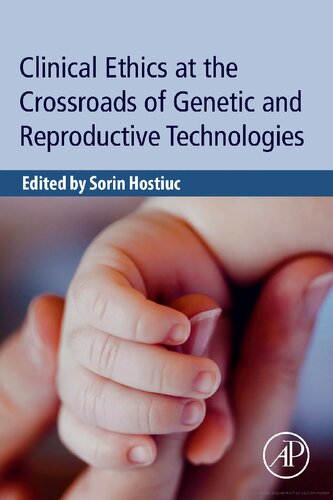
Instant downloaded Clinical Ethics at the Crossroads of Genetic and Reproductive Technologies 1st Edition Sorin Hostiuc pdf docx epub after payment.
Product details:
- ISBN 10: 0128137657
- ISBN 13: 9780128137659
- Author: Sorin Hostiuc
Clinical Ethics at the Crossroads of Genetic and Reproductive Technologies offers thorough discussions on preconception carrier screening, genetic engineering and the use of CRISPR gene editing, mitochondrial gene replacement therapy, sex selection, predictive testing, secondary findings, embryo reduction and the moral status of the embryo, genetic enhancement, and the sharing of genetic data. Chapter contributions from leading bioethicists and clinicians encourage a global, holistic perspective on applied challenges and the moral questions relating the implementation of genetic reproductive technology. The book is an ideal resource for practitioners, regulators, lawmakers, clinical researchers, genetic counselors and graduate and medical students.
Table of contents:
Chapter 1: Genomic Editing—From Human Health to the “Perfect Child”
Abstract
1 Introduction
2 Ethical Issues in Clinical Genome Editing
3 Conclusions
Chapter 2: Ethics of Mitochondrial Gene Replacement Therapy
Abstract
1 Introduction
2 What Is Mitochondrial Disease and Mitochondrial Donation?
3 The UK Timeline
4 The International Position
5 Are the Techniques Safe?
6 Ethical Issues
7 “Three-Parent Babies” and Identity
8 Genetic Modification and the “Slippery Slope”
9 Donating Eggs (Risks and Benefits)
10 Differences Between PNT and MST
11 Mitochondrial Disease as Complex: Diagnosis, Predicting Risk, and Genetic Counseling
12 Alternative Reproductive Options
13 Polar Body Transfer and Gene Editing
14 Conclusion
Chapter 3: Reproductive Technologies Used by Same Gender Couples
Abstract
1 Introduction
2 Procreative Autonomy
3 Gamete and Embryo Donation
4 Surrogacy Agreement
5 Transgender Parenthood
6 Conscience Clause
7 Conclusions
Chapter 4: Ethical Issues Raised by Multiparents
Abstract
1 Introduction
2 Multiparents of Children Born Through ARTs
3 Where Do All These Parents Come From?
4 Ethical Issues
5 Secondary Ethical Issues
6 Final Considerations
Chapter 5: Revisiting the Nondirective Principle of Genetic Counseling in Prenatal Screening
Abstract
1 Introduction
2 Historical Background and Implementation of Public Policy for Prenatal Screening
3 Ethical References in the Development of Screening Tests
4 Genetic Consultation in Prenatal Screening: Nondirective and Neutral?
5 Nondirective Consultation Challenged or an Opportunity to Support Reproductive Autonomy by Complete Balanced Information?
6 Taking Reproductive Autonomy Further: Innovations in Information and Aided Decision-Making Tools
7 Conclusion
Chapter 6: Sex Selection, Gender Selection, and Sexism
Abstract
1 Introduction
2 The Roots and Reasons of Sex Selection
3 From Politics on Reproduction to Biopolicy
4 Missing Girls: Why and How Many?
5 Legal and Ethical Questions
6 Conclusion
Chapter 7: The Impact of Big Data on Beginning of Life Issues
Abstract
1 Introduction: First of All, What Is Really “Big Data”?
2 Big Data and Health care: An Expanding Universe
3 Big Data and Beginning-of-Life Issues: A Field in Its Infancy
4 Conclusion: A Work in Progress
Chapter 8: The Moral Status of the Embryo From the Standpoint of Social Perceptions
Abstract
1 Introduction
2 The Empirical Perspective in Bioethics and Public Perceptions of Science Studies
3 The Notion of Moral Status
4 Two Contrasting Narratives on the Moral Status of the Embryo
5 The Status of the Embryo Frame and the Beginning of Individual Human Life
6 Views on the Status of the Embryo, Religious Beliefs, Scientific Literacy, and Gender
7 Moral Status and Attitudes to Embryo Research
8 Conclusions
Chapter 9: Fetal Reduction
Abstract
1 Bioethical Issues of Fetal Reduction: Why Words Matter
2 The Moral Status of Embryo and Fetus
3 Fetal Reduction: “A Soft Cover for Hard Choices”
4 Parental Autonomy and Parental Responsibility
5 Conclusion
Chapter 10: Stem Cell Therapies for Neurodegenerative Disorders: An Ethical Analysis
Abstract
1 Introduction
2 An Overview on Stem Cell Therapies for Neurodegenerative Disorders
3 Use of Placebo Controls in Sham Surgery
4 Risk to Benefit Analysis for Stem Cell Therapies in Neurodegenerative Disorders
5 Induced Pluripotent Stem Cell Therapies for Neurodegenerative Disorders
6 Conclusions
Chapter 11: Predictive Genetic Testing in Multifactorial Disorders
Abstract
1 Introduction
2 Information and Consent in Predictive Testing for Multifactorial Disorders
3 Nondirectiveness in Predictive Testing for Multifactorial Disorders
4 Direct to Consumer Genetic Testing
5 When to Recommend Predictive Genetic Testing?
6 Nonmaleficence and Risk Assessment
7 Confidentiality and Family Sharing of the Genetic Results
8 Predictive Genetic Testing in Children
9 Genetic Exceptionalism and Multifactorial Disorders
10 Conclusions
Chapter 12: Whole-Genome Sequencing as a Method of Prenatal Genetic Diagnosis
Abstract
1 Introduction
2 From the Standard of Prenatal Diagnosis to Whole-Genome Sequencing
3 Whole-Genome Sequencing as a Prenatal Diagnostic Tool
4 Ethical Problems Surrounding Whole-Genome Sequencing
5 The Importance of Pre-WGS Test and Post-WGS Diagnostic Counseling
6 Conclusion
Chapter 13: Noninvasive Prenatal Genetic Diagnosis
Abstract
1 Introduction
2 High-Risk Versus Low-Risk Populations
3 Consent and Decision-Sharing
4 Counseling for NIPT
5 Should Parents be Allowed to Get Tested “for Information Only”?
6 A Teleological Approach to NIPT
7 NIPT and Discrimination
8 Eugenics, Procreative Beneficence, and NIPT
9 Conclusions
Chapter 14: Prenatal Testing in Low-Risk Populations: A US Perspective
Abstract
1 Introduction
2 Background on Offering the Test to Low-Risk Women
3 Overestimation of the Significance of Genetic Information
4 Diagnostic Test Versus Screening Test
5 Reduced Penetrance and Variable Expressivity
6 Negative Test and Health Baby Assumptions
7 Incidental Findings: Maternal Conditions
8 Abortion
9 Ethics of Testing Just for Information
10 Practical Issues: Who Will Counsel Patients?
11 OB/Gyn Counseling
12 Information Access Outside of the United States
13 Problematic Solutions
14 Linear Model of Information Transmission
15 Justice Issues: Access to Testing
16 Conclusion
Chapter 15: Using Genetics for Enhancement (Liberal Eugenics)
Abstract
Acknowledgment
1 Introduction
2 Genetic Enhancement
3 Liberal Eugenics
4 Regulation, Health Coverage, and Public Opinion
5 Conclusion
Chapter 16: Should Incidental Findings Arising From Prenatal Testing be Reported Indiscriminately to Patients?
Abstract
1 Introduction
2 Incidental Findings in the Prenatal Setting
3 Reporting Incidental Findings in the Prenatal Setting
4 Handling Incidental Findings: Informed Consent Procedures and Pretest Counseling in Genetic Testing
5 Conclusion
Chapter 17: Third Party Sharing of Genetic Information
Abstract
1 Introduction
2 Medical Practitioners and Institutions
3 Family Members, Partners, and Potential Partners as Third Party
4 Criminal Investigations
5 Employment
6 Pharmaceutical Investigations and Clinical Research
7 Insurance
8 Conclusions
People also search:
clinical trials ethics
crossroad genetic
clinical ethics a practical approach
clinical ethics cases
clinical trials ethical issues
You may also like…
Politics & Philosophy - Social Sciences
Education Studies & Teaching
At the Crossroads Challenges of Foreign Language Learning 1st Edition Ewa Piechurska-Kuciel
Medicine - Others
Education Studies & Teaching
Biology and other natural sciences - Genetics



